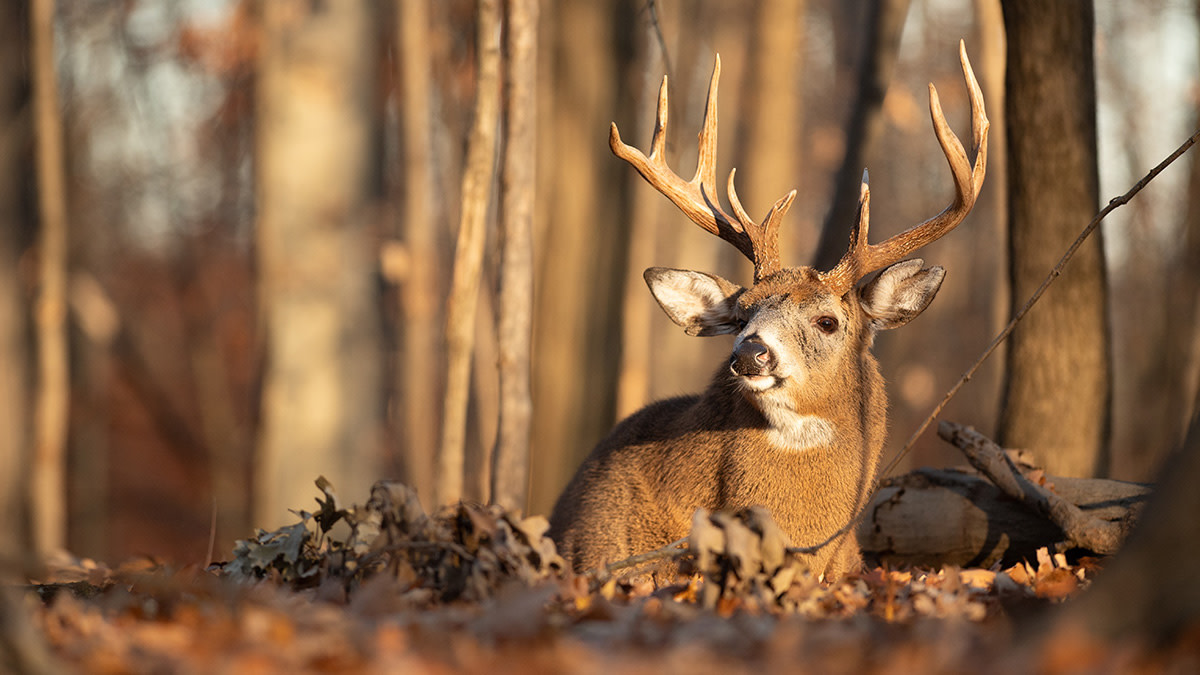
A couple of weeks ago I sat on a hill in western Minnesota as the sun just started to breach the eastern horizon. Below me lay a sprawling piece of public land, which contains a mix of cattail sloughs, willow thickets, waterways, and CRP grass.
I could just barely see two trucks parked along the southern boundary of the property. Both contained orange-clad hunters with binoculars pressed to their faces. As I scanned the cover, I started picking up deer. A decent buck in a creek bottom, does and fawns spread throughout the tall grass, and then two more smaller bucks nearly to the most centrally located cattail slough.
It only took a few minutes of glassing to realize something—by first light, the majority of deer were back in the cover and on their way to their beds. Late season is like that, especially when you’re dealing with pressured deer. The upside of the whole thing was that for over two hours, I could pick out bits and pieces of several deer as they browsed their way through the thick stuff.
Those public land whitetails reaffirmed a belief I’ve held for a long time—if you’re going to hunt mornings in the late season, your best opportunity is to post up in the cover long before they get there.
The Last 10%
In fishing and hunting, there is a rough 90/10 rule that goes something like this: 90% of the fish are caught by 10% of the fishermen. Swap fish with deer and fisherman with hunters, and it’s largely true for us as well.
My 90/10 rule for late-season mornings is different. I know that most of the deer will cover maybe 90% of the distance back to their beds before I ever have a chance to shoot them. The last 10% is what I care about the most.
Instead of focusing on food, which is the linchpin of most late-season afternoon hunts, morning hunters need to understand bedding. The colder and nastier the weather is, the easier this is to figure out. Deer need to be where the elements don’t sap their body heat and cause them to lose unnecessary calories. Geothermal cover that blocks wind and hopefully absorbs some rays of sun is key.
Walk your grounds, and look for beds. Make sure you pay real close attention to all of the deer you jump, and then make a note of the wind direction and the conditions. When you find a patch of this cover, you have the most important piece of the puzzle.
You still have to figure out how to hunt, however.
Travel Routes & Ambush Sites
The problem with quality winter bedding cover is that it often isn’t found where perfectly straight, stand-friendly trees exist. When I’m slipping in two hours before first light to hunt morning whitetails during December, I’m almost always going into a sketchy setup.
I don’t mean in a dangerous way, I mean that it’s going to be in a small tree. Maybe the only tree in 10 acres of cover that could even hold me up. Or I’m going to be in a natural ground blind with terrible views and one lane to shoot as they show up and pass through. If they are bedding in the big timber where suitable stand trees are everywhere, the challenge isn’t with the setup but access. You almost always risk a lot of noise and intrusion to get where you need to be, but that’s part of the deal. Late-season often features calm days and crunchy leaves, which compounds this problem. Expect to make a lot of noise on the way in, so give yourself time.
You’ll also want to prepare yourself to sit longer than you think might be necessary. Even though the fields are empty at first light, that doesn’t mean the movement is over. The last buck I watched go to bed during that western Minnesota hunt didn’t get there until it was two hours into daylight. He was clearly confident in his security, and so were several other deer. It’s easy to get antsy after an hour or two, but dress so you can stick it out for at least three hours.
Conclusion
While most hunters have either given up, or have gone the afternoon-only route, there is an opportunity to tag out on a breakfast buck. You just need to figure out approximately where he is going to bed in the current conditions and then work through whatever marginal setups the cover offers you. If you do that and you give yourself enough time during each sit, you might find yourself salvaging your season right before the closing bell tolls.
For more late-season hunting information, check out these articles: The Cure For Your Late Season Hunting Troubles, To Kill A Late Season Buck (Without A Food Plot), and 3 Natural Food Sources To Hunt Late Season.
Feature image via Matt Hansen.






